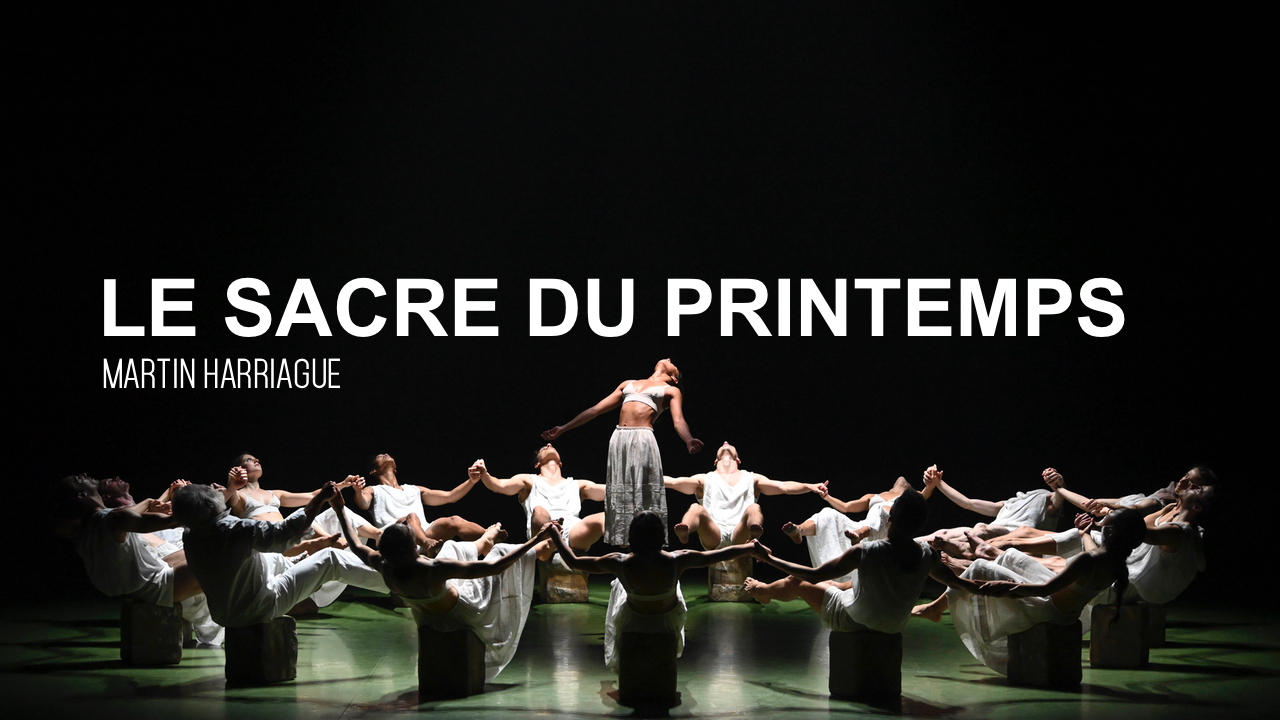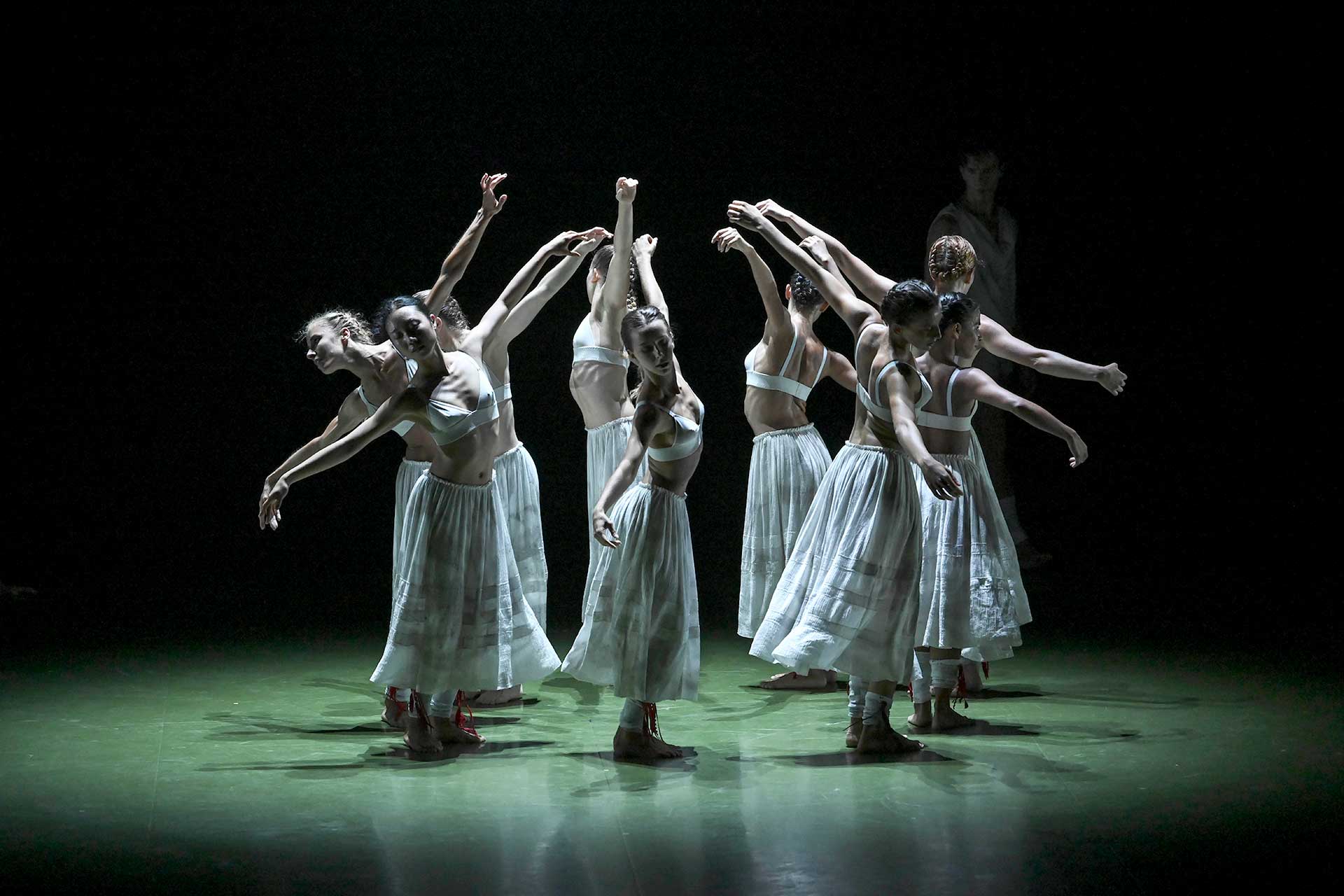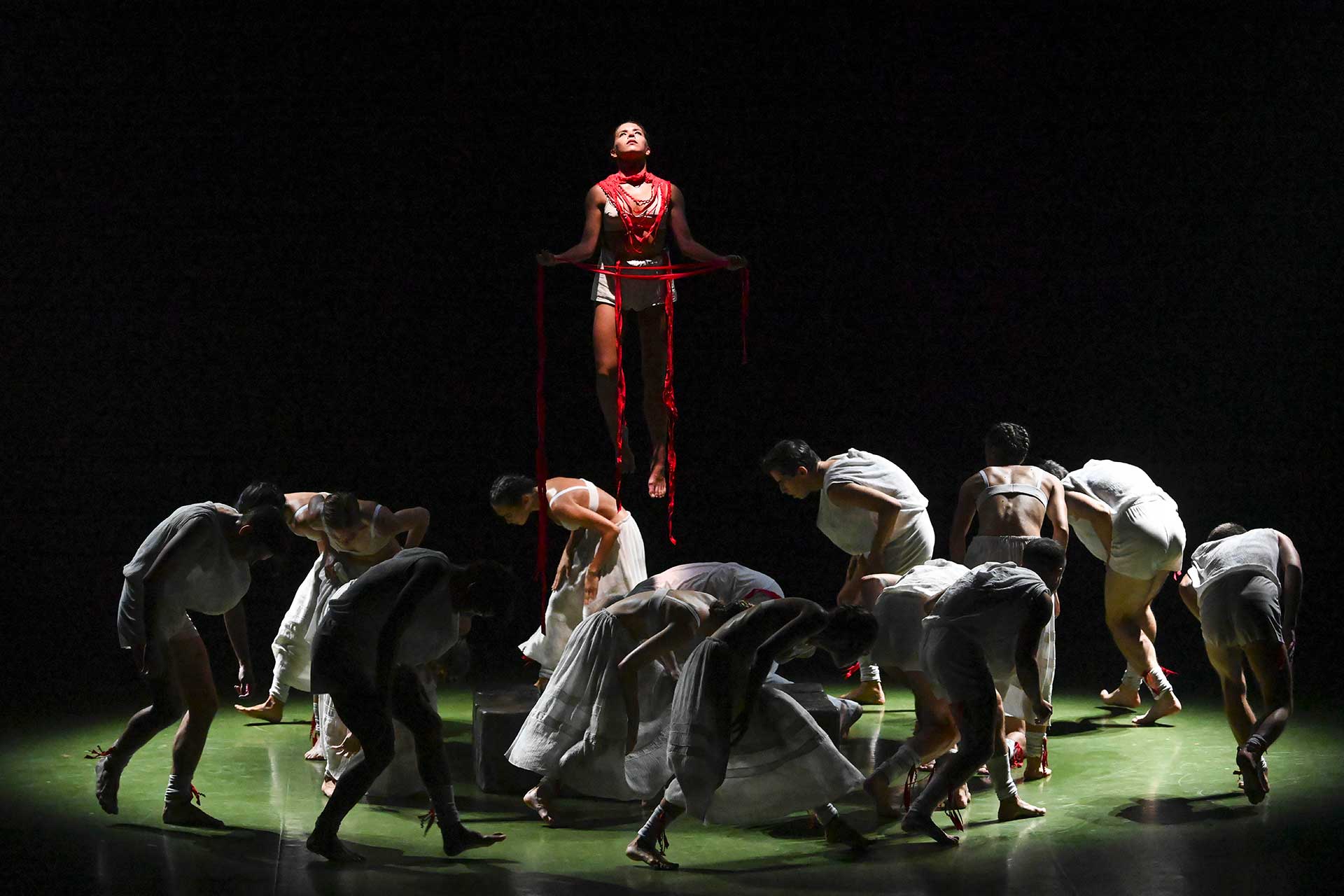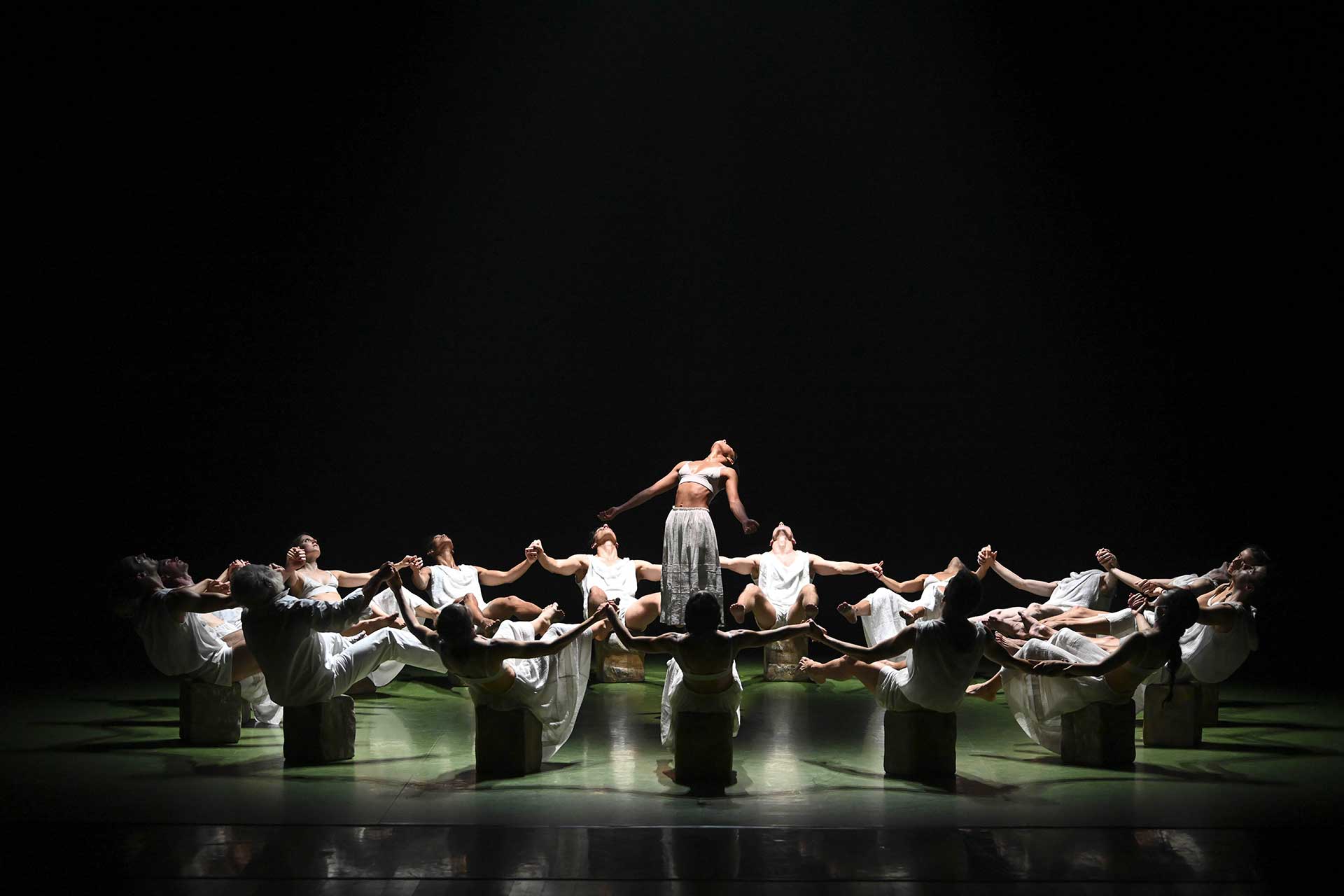The Rite of spring
The relationship between man and nature fascinates and worries Martin Harriague. From what he has already evoked in his recent creations (Sirènes, Fossile, Serre) – the rebirth of the living, its power, the struggle for its survival – Stravinsky’s iconoclastic and brilliant work for the Ballets Russes contains everything, and more again.
In many ways, The Rite of spring was a “revolutionary” advance, both in its Nijinsky choreography and in its score. Harriague decides to seize the myth while respecting the original intention of the composer: illustrated by a pagan rite, “it is the dark and immense sensation at a time when nature renews its forms, and it is the vague disorder and profound of a universal drive”, specifies Stravinsky in an article that Martin Harriague takes as a reference (CND, revue Montjoie, May 29, 1913). Jacques Rivière, director of the NRF, spoke at the time of a “biological ballet”: “Spring in its effort, in its spasm… You would think you were witnessing a drama of the microscope”.
The intricate rhythmic hammering that gives the work its wild and menacing force suits Martin Harriague’s body language, explosive and earthy. Because the music dictates it to him, he renounces all gestural lyricism this time; it focuses on the expressive power of primitive movement and fractal figures through which the group wraps, unfolds, contracts like the living reappears, makes its way everywhere before exploding.
From Nijinsky who had dared this transgressive break with classical language, Harriague borrows the trampling of the Spring Augurs who “mark with their step the pulse of Spring”. The quotations from the original ballet stop there, but the entire piece testifies to the desire to rely, in order to stage Stravinsky’s vision, on the expressiveness of the music, particularly dazzling under the baton of Teodor Currentzis. We physically feel the wild energy and the timeless dread that inhabit this group confronted with the violence of the living, purified by the rite. We perceive the savagery and the necessity of the final offering of the chosen one, a feminine principle embodying the energy of spring, the sap, pure and healthy, which rises, an allegory of the living which rises towards the light.
THE RITE OF SPRING
creation for the Malandain Ballet Biarritz, France – 18 dancers
Date November 2021
Length 35 minutes
Choreography & scenography Martin Harriague
Music & argument Igor Stravinski
Lights François Menou & Martin Harriague
Costumes Mieke Kockelkorn
Costume makers Véronique Murat, Charlotte Margnoux
Set & prop makers Frédéric Vadé & Annie Onchalo
Choreographer assistant Françoise Dubuc, Nuria López Cortés
Coproduction Donostia Kultura – Victoria Eugenia Antzokia -Donostia / San Sebastián (Espagne) – Ballet T, Chaillot-Théâtre national de la Danse – Paris, Théâtre des Salins, Scène nationale – Martigues, Le Cratère – Scène nationale Alès, Opéra de Reims, La Rampe – Scène conventionnée Echirolles, Opéra de Saint Etienne, CCN Malandain Ballet Biarritz
Partners Théâtre Olympia d’Arcachon, Le Parvis – Scène nationale de Tarbes Pyrénées, Théâtre de Saint Quentin-en-Yvelines – Scène nationale, Festival de Danse Cannes – Côte d’Azur France
La presse en parle...
That of the brilliant Martin Harriague, a rising star in French and notably Basque choreography, indisputably refers to the origins of a primitive Russia evoked by Nijinsky. For this, he rediscovered the trampling, the presence of the ancestor, the dynamic even more violent than at the time of the creation, when the dancers were hardly accustomed to so much acrobatics, and the sacrificial spirit more than erotic, in a hymn to reborn nature, which nevertheless needs to be broken in order to live again. Admittedly, this is not typical Harriague, but the fresco is impressive, the capsizing end.
Concertclassic, Jacqueline Thuilleux, September 14th, 2021
A boiling Rite of ideas that we will not detail here as it is a treat to discover them.
Le Figaro, Ariane Bavelier, September 15th, 2021
A propos du Sacre du printemps : «Une chose est sûre : Martin Harriague est un vrai chorégraphe.»
Les Echos, Philippe Noisette, 14 septembre 2021






